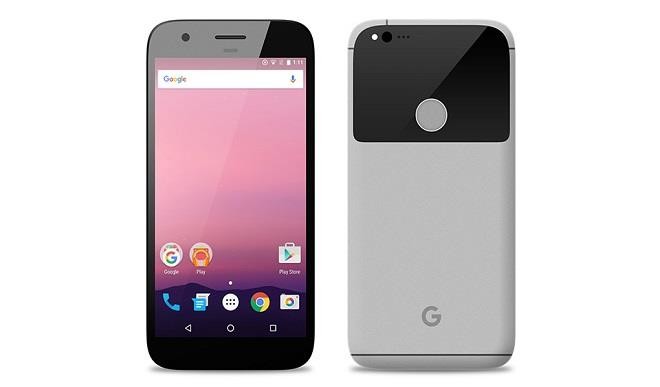Google’s Pixel: An alternative to Samsung Galaxy?
As if to say it’s got a better alternative for you if you would rather not deal with the combusting Galaxy Note 7 smartphone, Google, last week, unveiled its new smartphone called Pixel. Early reports suggest that Pixel sounds like a hardcore Android fan’s dream phone. The attributes include cutting-edge specs, premium hardware, class-leading cameras, […]

![]()
As if to say it’s got a better alternative for you if you would rather not deal with the combusting Galaxy Note 7 smartphone, Google, last week, unveiled its new smartphone called Pixel. Early reports suggest that Pixel sounds like a hardcore Android fan’s dream phone. The attributes include cutting-edge specs, premium hardware, class-leading cameras, the latest and greatest Nougat software from Google, Virtual Reality capabilities, and much more.
Before now, the Galaxies dominated Android-domain high-end smartphones. However, with the Pixel, the battle may be on. Google unveiled two versions of Pixel, one simply called Pixel, and the other, Pixel XL. Optimists are suggesting these might be shaping up to be two of the hottest smartphones of the year.
Right on time, I’ll say, given that Samsung doesn’t seem to be getting a handle on its problem with Galaxy Note 7, which was released a few weeks ago but were found to burst into flames in numerous instances around the world. Even the shipments to China, which were initially believed to be safe, turned out to be also defective. More worrisome perhaps is the fact replacement phones have also been found to explode. Southwest Airlines in the US was forced to evacuate its passengers and crew before taking off last week Wednesday from a Louisville, Kentucky airport after smoke was detected from a replacement Samsung smartphone. Brian Green, the owner of the phone told the media that his Galaxy Note 7 started to smoke after he powered it down in the cabin. He also said the exploding phone was actually a replacement for one recalled last month. The incident will complicate safety concerns for Samsung. Moreover, Samsung’s efforts toward restoring customer loyalty by implementing a worldwide recall plan might have been undermined by the event of last week.
Zack Epstein, who had published a rousing approval of Galaxy Note 7 when it was released, is now reversing his accolades for the device. In fact, in his 6 October 2016 online article, he is of the opinion that “… but for the time being, things are not looking good at all – and consumers cannot and should not be confident that Samsung’s replacement Note 7 handsets are safe.” Furthermore, he is asking consumers to not buy Galaxy Note 7: “So, until Samsung and the CPSC complete their investigations, do not purchase a Galaxy Note 7.” (CPSC stands for “Consumer Product Safety Commission,” an agency of the U.S.)
How will existing Android-based smartphones fair in the face of Pixel? Unlike Google’s phone Nexus, Pixel is coming in as a very high-end phone with tons of capabilities and features that compare well with iPhone by Apple. So, the current development should be of real concern to the companies peddling one type of Android phone or another. Moreover, as was the case for the Nexus devices, the Pixel phones will be running a special version of Android OS that does not seem to be available to other smartphone vendors and carriers. The Pixels will also be able to instantly access Android OS updates as soon as they are released. Thus, if the Pixel phones have competitive basic high-end smartphone features, they might not be operating on a level-playing ground relative to Android-based phones manufactured by other companies.
These are the rumored features of Pixel – the relatively “low-end” version: Display is 5 inch with a resolution of 1920 x 1080 pixels. The phone weighs 143g, uses Qualcomm Snapdragon 821 quad-core 2.1GHz processor, and has the graphical processing unit (GPU) Adreno 530. The RAM is 4GB while storage is 32GB or 128GB, with a MicroSD of up to 256GB of extra storage. There is a 12 MP Rear camera and an 8 MP Front camera. The battery is 2770mAh Quick Charge. The phone runs Android 7.1 Nougat. It is available in Silver and Black. The “higher end” phone, Pixel XL, has similar features, except that it is larger – 5.5 inch; has better resolution (2560 x 1440 pixels), is a bit heavier 168g, and has a longer battery life: 3450mAh Quick Charge. The Taiwanese company HTC, which manufactured the very first Nexus for Google, is also making Pixel.
There are speculations as to why Google is getting away from Nexus and into Pixel. But then, why Pixel now, when the demand for smartphones seems to have saturated? May be Google wants a platform to display its tech prowess, such as Google’s DayDream Virtual Reality, which the Pixel phones will support? Some suggest that Pixel is Google’s reaction to the news that both Samsung and Huawei are working on a future without Android running their phones. Increased revenues from phone sales are always attractive, as is the ability to have more control, the way Apple does with its products.
Pixel will play catchup to both iPhone and the Galaxies, and so it is not easy to predict the eventual performance of Pixel in the marketplace.
